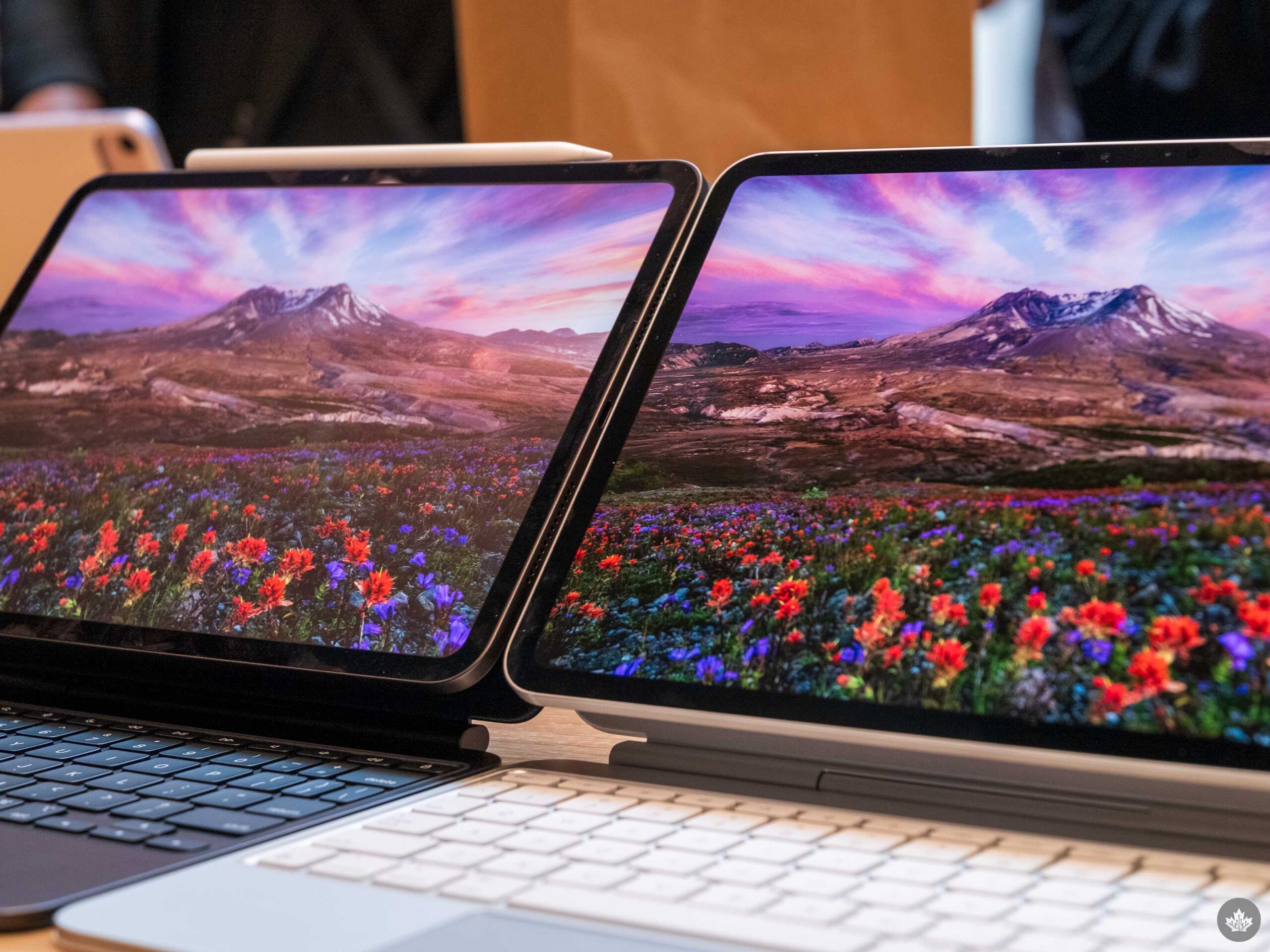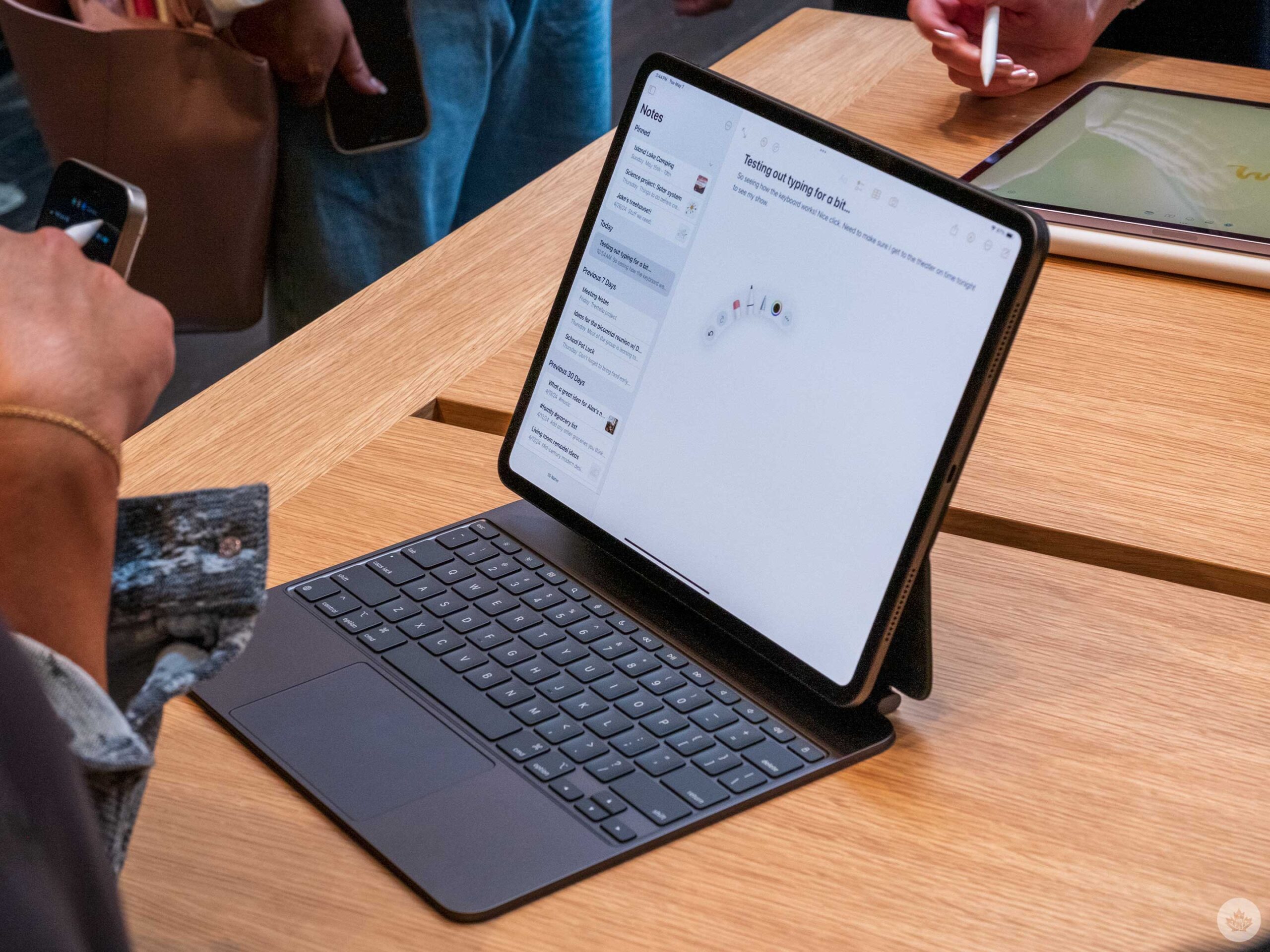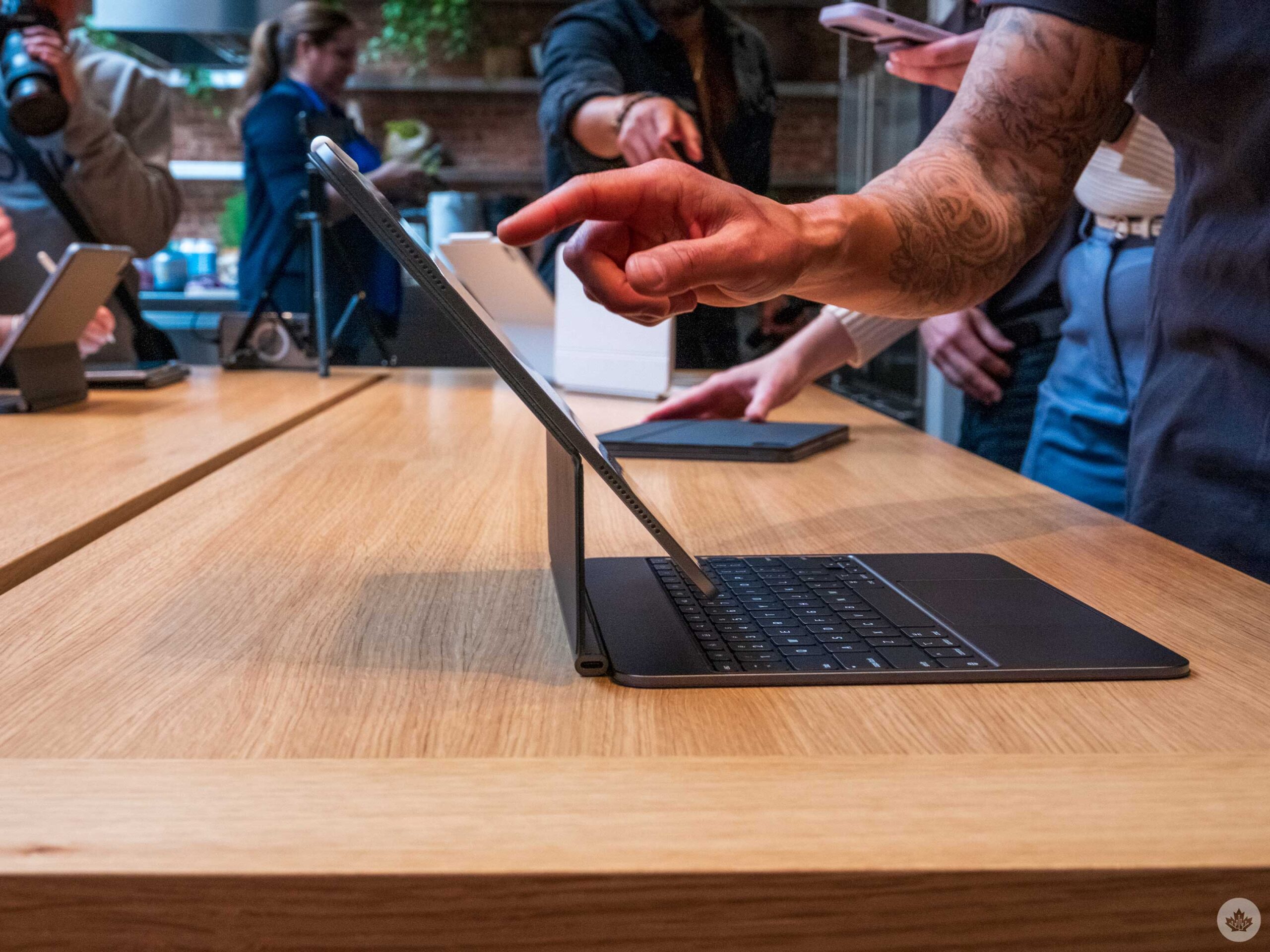Years ago, every single Apple product was incredibly exciting because it was full of innovation you could see or feel – a click wheel, a multi-touch screen, and ARM chips for desktop computers.
Lately, the upgrades have been more subtle; we live in the age of amazing computers, so it’s hard to see meaningful improvements when you look at a product year-over-year. That’s not the case with the new iPad Pro lineup. From the moment you look at the screen, it beams back at you and says, “I’m the next generation, enjoy.”
The best screen in town
While bright OLED screens exist, Apple had to work through years of engineering to make its super bright dual-layer OLED tech ready for the M4 iPad Pro. It might not sound like it, but it’s a very exciting mobile innovation. When you see it, it just pops, and the contrast ratio is magical. I’m not even joking when I say that in my last hands-on demo, I was mesmerized by the screen, and I was only looking at the HDR demo reel; I can’t wait to test it out with real 4k UHD movies.
Apple says that its internal display team came to the chip team years ago to try and get them to build a chipset with enough power and the appropriate display engine that could support the dual-layer OLED while maintaining the battery life iPads are known for. Now, two years later, the M4 is here and with it is the most gorgeous mobile display I’ve ever seen.
The screen tech works by stacking two OLED panels on top of each other. This allows the bottom panel to boost the brightness of the top one by shining lights up through the gaps between pixels. Getting the two displays to work in tandem involved a significant amount of engineering, according to Apple, since it’s not as simple as running two displays at max brightness directly on top of each other.
This new display tech has only been seen on one other smart device, which is a limited edition Honor Magic 6 variant that’s mostly available in parts of Europe and China. Honour is marketing this tech as longer lasting than regular OLED tech, so it would be nice if that applied to the new iPad Pro screens as well. It seems that both Apple and Honour started on a smaller scale with this tech since it is tricky to nail down, but since both manufacturers see merit in it, I’m hoping it will come to even more flagship devices over the coming years.

The left iPad in Space Black has the Nano Texture coating.
The Display innovations don’t end there. If you opt for 1TB or 2TB models, you can also get your iPad Pro with the same ‘Nano-texture’ coating that’s on the Pro Display XDR. It gives the display a matte look and texture while also cutting down on reflections. This makes it easier for professional colourists who work in bright environments. I think it really shines when you use it with the Apple Pencil since it gives you a little more grit to run your stylus over. This texture only covers the display and not the full front of the iPad; the bezels are still glossy. It’s not overly noticeable in practice, but you can see it when the display is off. Finally, it’s worth pointing out that this texture still attracted some fingerprints during my brief hands-on time with it, so I don’t expect it to be the perfect fingerprint killer.
All of the display options look great this year, and it’s exciting to see that both the 11-inch and 13-inch models feature the same tech, unlike previous iPad Pros. This means that no matter what Pro you choose, you’ll have the same great screen on both models.
Ok, but what else does the new iPad Pro do?

The rest of the M4 chip improvements are as you’d expect. It’s much faster than the older M2 and slightly faster than the M3 (that never got put in an iPad). The most exciting change is really the upgraded Neural Engine (NPU). This part of the chipset helps the iPad complete AI tasks faster.
In one demo, we saw the AI Stem Split tool in Logic Pro on iPad Pro isolate vocals, bass and drums from a song, and it only took about seven seconds. Apple said the iPad Pro with M2 can do it in about 14 seconds. This may not sound like a lot, but if you need to use a lot of AI tools over the next few years, this extra NPU power will likely keep this iPad competitive for a while. Since AI tools are exploding right now across a ton of industries, it feels like Apple is on the right track by skipping the M3 and just launching the iPad with as much Neural engine power as possible.
On the gaming side, like the M3 chip I reviewed recently in the MacBook Air, the new M4 chip is quite capable. It can do Apple’s ‘Dynamic Caching’ and ray tracing to help games have realistic lighting and shadows. I wasn’t able to really test any games, but from what I saw on the M3, the M4 should have more than enough power. The real test will be finding games that take advantage of it. So far, the main console titles you can play are Resident Evil: Village, Resident Evil 4: Remake, Divinity: Original Sin 2, and Assassin’s Creed Mirage, which is coming to M-series iPads this summer.
 The new Pro also works with a new Magic Keyboard that’s lighter than its predecessor, making the whole combo significantly easier to tote around. It also helps it stay more competitive with the MacBook Air since the old iPad and Magic Keyboard were so heavy they were basically the same as carrying around a laptop. The new version helps maintain some of that classic iPad portability while adding the functionality of a keyboard. To further this, the function keys have been added to the new keyboard, and the built-in USB-C port can charge the iPad up to 60 watts. However, you still can’t use it for data passthrough.
The new Pro also works with a new Magic Keyboard that’s lighter than its predecessor, making the whole combo significantly easier to tote around. It also helps it stay more competitive with the MacBook Air since the old iPad and Magic Keyboard were so heavy they were basically the same as carrying around a laptop. The new version helps maintain some of that classic iPad portability while adding the functionality of a keyboard. To further this, the function keys have been added to the new keyboard, and the built-in USB-C port can charge the iPad up to 60 watts. However, you still can’t use it for data passthrough.
The new keyboard has an aluminum palm rest this time around, and the keys feel a little firmer than the older keyboard. Apple says it worked hard to make the new iPad Pro Magic Keyboard as close to typing on a Mac as possible, and in my brief tests, that held up. The large 13-inch model especially felt very similar to my Macbook Air. It should be noted that this new keyboard only works with the iPad Pro (2024). The old Magic Keyboard will remain on store shelves for older iPad Pros and the iPad Air lineup.

The keyboard isn’t the only new Pro accessory. Apple has also revealed the new Apple Pencil Pro, which adds haptic feedback, a squeeze gesture and a gyroscope to make using the pencil even more natural to use than before. These sound like small upgrades, but being able to slightly rotate the Pencil Pro and have it change how my handwriting looked was seamless. If you’re a digital artist, this Pencil upgrade is going to be really hard to avoid. That said, because Apple moved the webcam to the long side of the new iPad models, this new Pencil needed an upgraded magnet and charging array to fit over the camera module. This means it only works with the new iPad Pro and the new iPad Air. The Pencil Pro also has Find My, so you can locate it when it’s lost.
Overall, when it comes down to it, this new iPad Pro is really exciting and full of innovations I can’t wait to see make their way to more cost-effective iPad models over the next few years. The thinner design and really intuitive Pencil Pro make it feel like Apple Magic when you pick up an iPad and start drawing exactly like you could on a piece of paper.
Pricing and accessories
The base model 256GB and the 512GB iPad Pros come with a 9-core CPU and 8GB of RAM. These configurations can’t be bought with the Nano-texture coating. The 11-inch starts at $1,399, and the 13-inch starts at $1,799.
If you want to step it up, the 1TB and 2TB models include a 10-core CPU and 16GB of RAM. These models start at $2,229 for the 11-inch and $2,629 for the 13-inch. Adding the Nano-texture is another $150.
The M4 iPad Pro supports the USB-C Apple Pencil and the new Apple Pencil Pro. It sucks that it can’t work with the older Apple Pencil 2, but the company needed to redo the layout of the pencil to fit the agents around the new iPad camera position. The Apple Pencil Pro is $169.
The final new accessory is the new metallic Magic Keyboard with function keys. The 13-inch is $449, and the 11-inch is $399. The older iPad Magic Keyboard won’t work with the new iPad either.
Altogether, it’s worth pointing out that the iPad Pro, plus its accessories, costs $1,967 at the low end. If you maxed everything out, it will be $4,227.
MobileSyrup may earn a commission from purchases made via our links, which helps fund the journalism we provide free on our website. These links do not influence our editorial content. Support us here.
